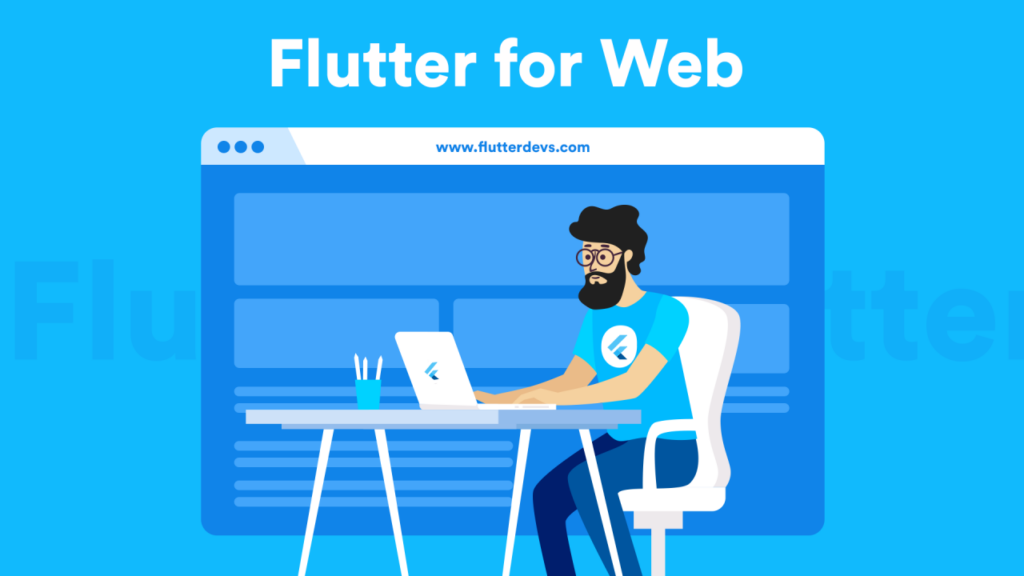
Introduction:
Flutter, the open-source UI toolkit developed by Google, has earned its reputation as a powerful framework for building stunning and responsive mobile applications. While its proficiency in mobile app development is widely recognized, what often goes unnoticed is its remarkable capacity to excel in web development. In this article, we’ll not only delve into the capabilities and challenges of using Flutter for the web but also emphasize that Flutter isn’t merely confined to hybrid app development—it’s a versatile and formidable tool for creating dynamic web applications.
Flutter’s Journey Beyond Hybrid App Development
Flutter’s evolution beyond hybrid app development represents a significant milestone. It has rapidly expanded its horizons, becoming an invaluable asset for web developers. The progression of Flutter from a mobile-focused framework to a cross-platform juggernaut stems from several key factors:
- Single Codebase for All Platforms: One of Flutter’s standout advantages is the ability to maintain a single codebase for multiple platforms. This unified approach means developers can craft applications for the web, as well as mobile platforms like iOS and Android, without duplicating effort. This streamlines development and simplifies maintenance, saving developers valuable time and resources.
- Hot Reload for Agile Development: Flutter’s “hot reload” feature is renowned for its swiftness. It allows developers to instantly witness the impact of code changes, promoting rapid development and experimentation. This feature, which has already proven its worth in mobile app development, is equally invaluable for web development.
- Enriching Web User Experiences: Flutter’s unyielding emphasis on creating visually captivating, responsive, and interactive user interfaces extends seamlessly to web development. Web applications developed with Flutter are not just functional but also visually appealing, offering users a compelling and engaging experience.
- Dart Language and Web Development: Flutter employs the Dart programming language, known for its efficiency and performance. Dart seamlessly compiles highly optimized JavaScript for web applications, ensuring they run swiftly and efficiently.
- Expansive Ecosystem: Flutter’s ecosystem continues to burgeon, with an ever-increasing collection of packages and widgets available. This library of resources makes it easier for developers to access pre-built components, ultimately accelerating the development process.
Unveiling the Capacities of Flutter for Web
- Responsive Design: Flutter for Web is designed to ensure that web applications look and perform flawlessly across an array of screen sizes and devices. It adeptly adapts to diverse form factors, guaranteeing a seamless and user-friendly experience.
- Access to Device Features: Flutter web applications are empowered to access device features such as the camera, microphone, and geolocation. This capability creates a world of possibilities, enabling web applications with native-like functionality.
- Native-Level Performance: Flutter’s architecture is engineered for high performance on the web. Animations are exceptionally smooth, and user interactions are astonishingly responsive, resulting in a first-rate user experience.
- Unparalleled Customization: Flutter for the Web furnishes developers with extensive customization options. This means that web applications can be tailored to reflect unique branding and specific user interface requirements, resulting in truly distinctive and branded web experiences.
Triumphing Over Challenges
While Flutter for Web holds immense promise, it’s crucial to confront the challenges that accompany this technology:
- Limited Browser Compatibility: One challenge faced by Flutter for the web is its limited support across all major web browsers. While it performs admirably in modern browsers such as Chrome, Firefox, Edge, and Safari, older browsers may not provide complete support, which can pose a challenge when considering a broader audience reach.
- Bulky Bundle Sizes: Flutter for web applications has been noted to have larger bundle sizes in comparison to traditional web frameworks. This may translate to longer loading times, particularly for users with slower internet connections.
- SEO and Accessibility Considerations: SEO optimization and accessibility features may require additional effort when employing Flutter for web development. Ensuring that web applications are discoverable by search engines and accessible to all users is essential but may necessitate more manual work.
- Third-Party Integration Challenges: While Flutter’s ecosystem is steadily expanding, some third-party libraries and integrations may not be readily available or may entail additional development work to function seamlessly with Flutter for the web.
Flutter’s Vast Horizon
In conclusion, Flutter’s foray into web development represents a remarkable technological stride that empowers developers to harness their existing Flutter skills for creating web applications with a single codebase. Its capabilities, encompassing responsive design, access to device features, native-level performance, and extensive customization options, make it a compelling choice for modern web development endeavors. It is, however, imperative for developers to acknowledge and address the challenges, including limited browser compatibility, larger bundle sizes, SEO and accessibility considerations, and the need for additional work with certain third-party integrations.
The crucial point to remember is that Flutter is not merely limited to hybrid app development—it’s an all-encompassing framework that is redefining web development. As the Flutter ecosystem continues to expand and mature, it is poised to offer even more advantages to developers, ensuring a brighter and more versatile future for web and app development alike. With Flutter, the possibilities are boundless, and the boundaries are limitless.
